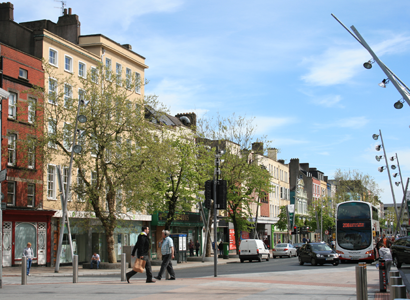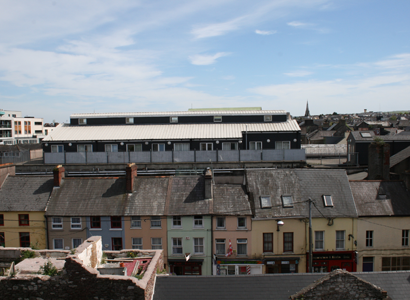The architectural heritage shapes our built environment from the humblest boundary wall and individual buildings to cities and great architectural complexes.
Historic buildings
- Desktop assessments
- Site appraisal and analysis of features
- Historical research
- Preparation of documentation for planning on material impacts
- Preparation of documentation for statutory declaration requests
Historic settlements
- Site evaluation of historic foundations
- Interpretation of economic and social context through time
- Record of physical characteristics
- Strengths and weaknesses analysis
- Recommendations for conservation area designation
useful link › For government guidance on architectural conservation
Architectural heritage policy is an essential part of conservation management. Policies assist in prioritising actions and should be based upon a solid understanding of the site.
Designation
- Evaluation of sites for protection at local, national and international level
- Defining sites and historic areas or assemblages for protection, including
Architectural Conservation Areas (conservation areas/historic districts)
& Record of Protected Structures
Conservation Plan
- Understanding all the aspects of significance of a site
within a multi-disciplinary context - Evaluating significance across likely natural, built, archaeological
and cultural headings - Identifying potential threats, conflicts and opportunities
- Devising strategies to protect significance
useful link › For information on conservation plans
Management of the architectural heritage is based upon an understanding of the character of an individual structure or group of buildings and allows for ongoing change.
Architectural Heritage Impact Assessment
- Review of significance of a building or site with specific regard to proposed interventions as part of planning or renewal
- Recommendations for mitigating potential negative impacts
Strategic Review
- Approaches to the administration of funding
- Priorities in times of economic change for the conservation of towns and cities
- Identifying stakeholder issues and capacities
Conservation Guidance
- Aligning practical guidance within legislative and policy framework
relative to local contexts
useful link › For all aspects of international guidance on architectural conservation
The delivery of clear and accessible information on the architectural heritage is an integral part of conservation. There are many means of raising awareness and facilitating public engagement on issues.
Research
- Archival research
- Heritage outreach projects to promote the architectural heritage
- Booklets, building typologies, exhibitions
Projects are more likely to be successful if they involve all relevant stakeholders and local communities.
Facilitation
- Briefing stakeholder groups including communities
- Guiding the identification of and discussion on key heritage issues, including development plan designations
- Reflecting group agreement or disagreement
- Assisting the articulation of self-defined goals and visions for groups in respect of the architectural heritage













